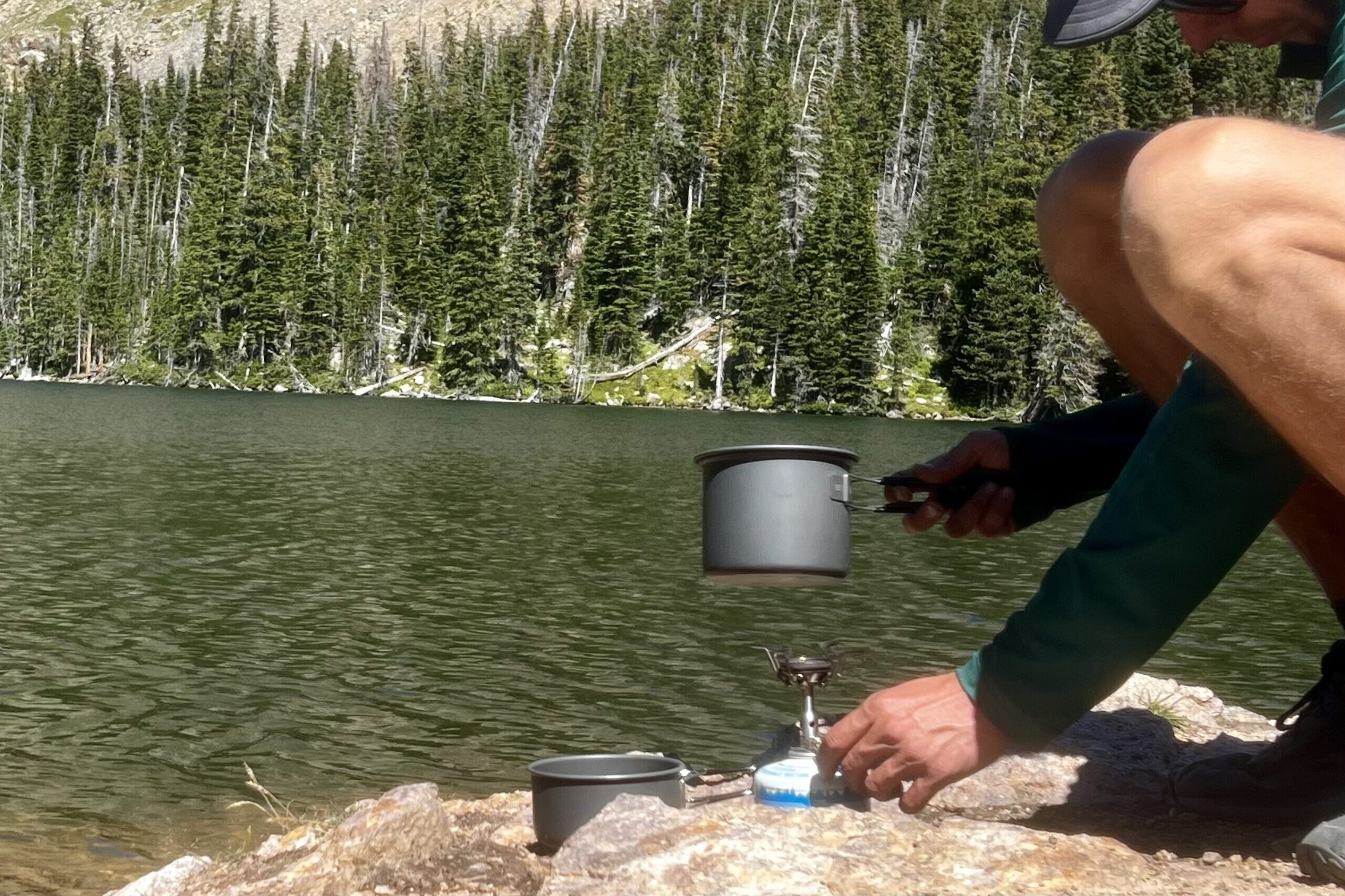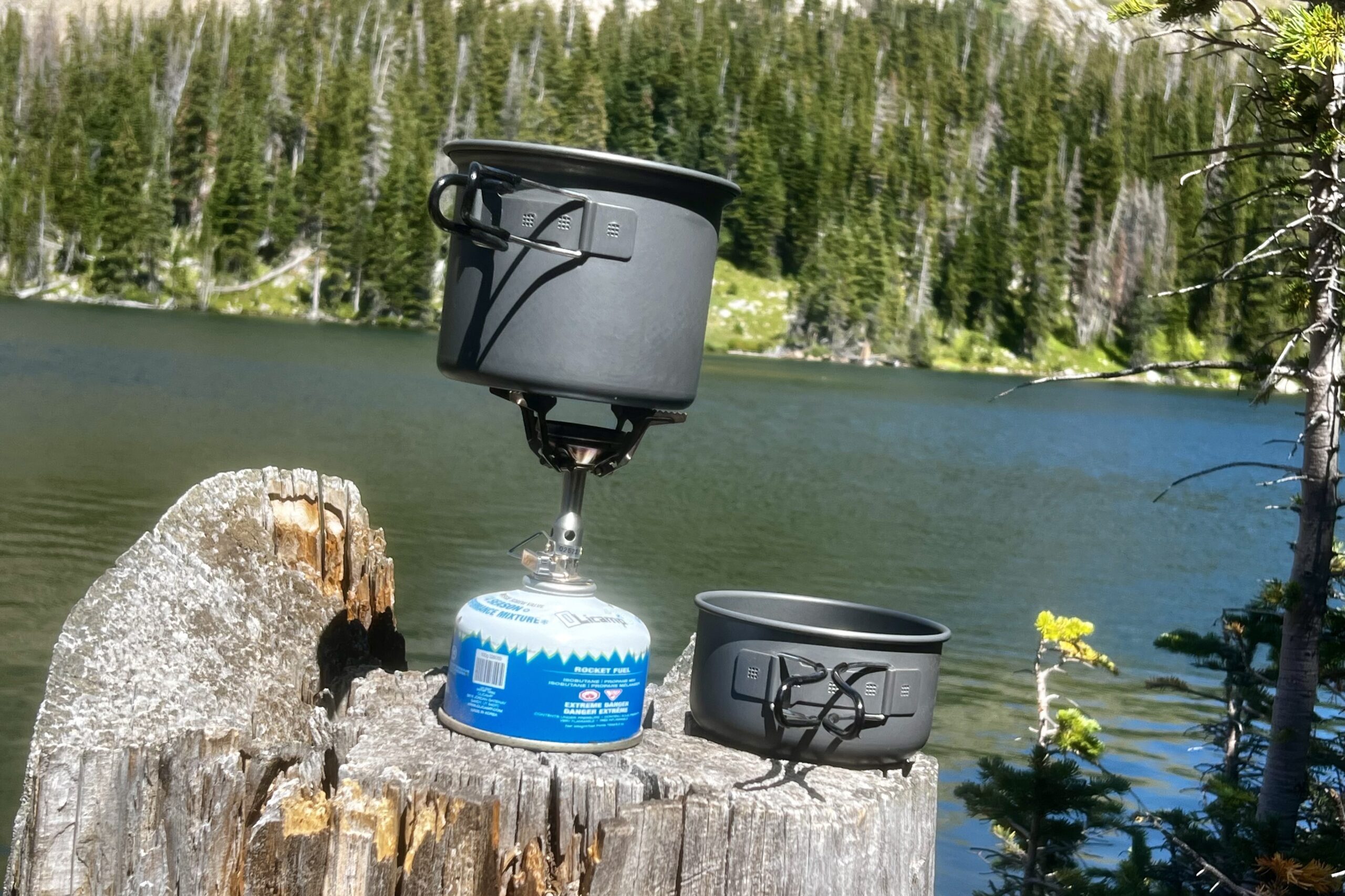
Bottom Line
The SOTO Amicus Cookset Combo provides you with everything you need in a backpacking cookset for an incredibly affordable price. If that’s not enough, the stove performs among the best of our favorite backpacking stoves. We put it through rigorous testing both in a controlled setting and high in the Rocky Mountains. The stove is lightweight, compact, has a decent boil time, and functions well.
The non-stick pot offers a ton of versatility with a lid that doubles as a second, smaller pot. However, if ultralight is your game, the combined 1500ml pot capacity might be a little overkill for your purposes. And although the stove is impressive for its price point, it’s not the most windproof.
Quick Specs
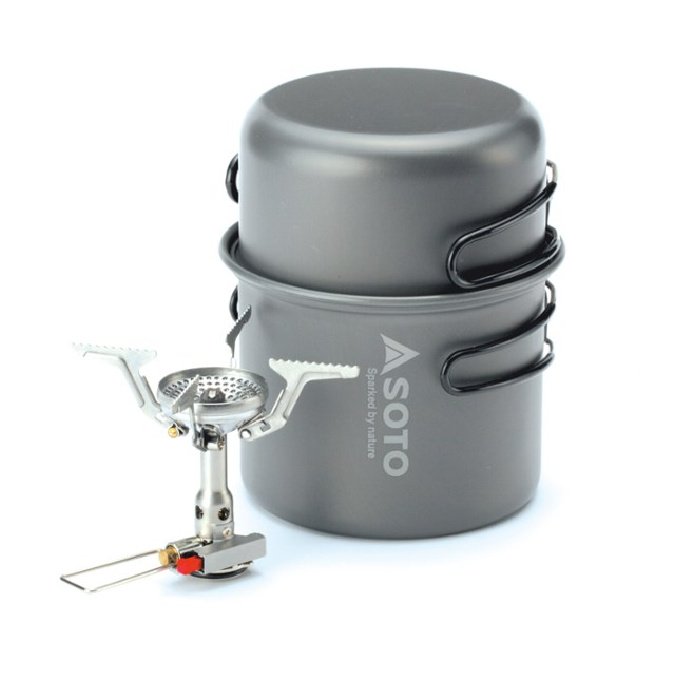
Soto Amicus Cookset Combo
Best Budget Stove & Cookset Bundle
Score:
69/100
Price:
$50
Weight:
11.2 oz. / 2.7 oz.(Stove & Pot/Stove Only)
Fuel Type:
Isobutane/propane canister
Boil Time:
4m 20s
Burn Time (8 oz. fuel):
90m
Pros
- Ultralight
- Affordable
- Two pots included
- Simmer control
- Stable pot support
- Performs well in wind
Cons
- Pots don’t have measurement marks
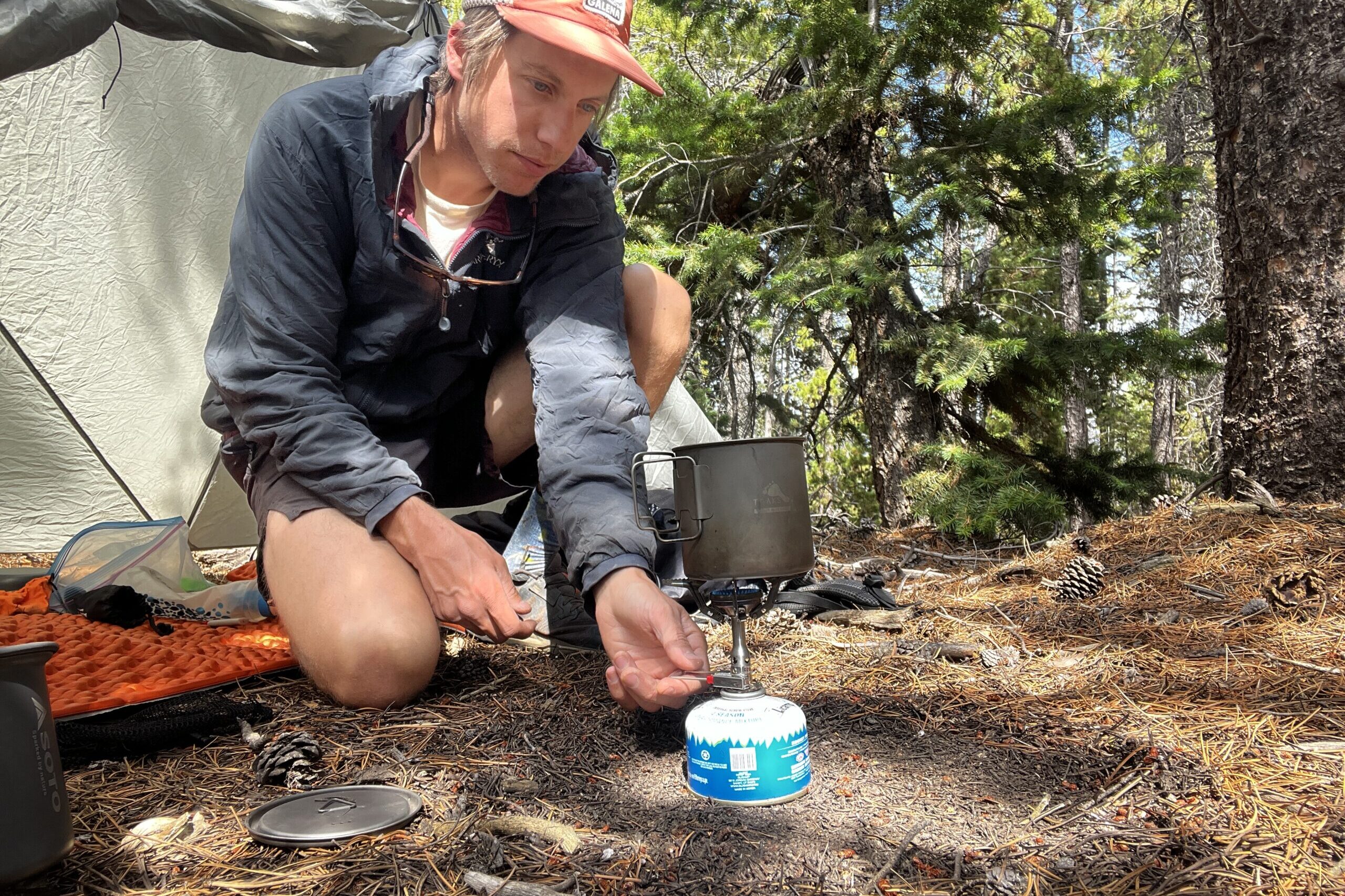
Convenience
The Amicus is a nicely featured stove and cookset that, overall, is pretty pleasant to use. For one, the stove has an ignition switch, a feature that is usually reserved for more expensive or more robust stoves. It works great too! The stove is also reasonably stable for its small size. Though the included pot isn’t small, the stove held it just fine when full of a liter of water.
The 500ml pot has a diameter that is just smaller than the diameter of the larger 1000ml, so they nestle together nicely. When cinched down in the included mesh stuff sack, it makes for a solid home for your fuel, stove, lighter, and other cooking supplies. The handles seem plenty sturdy and feature a comfortable rubber coating to keep your hand safe from the heat.
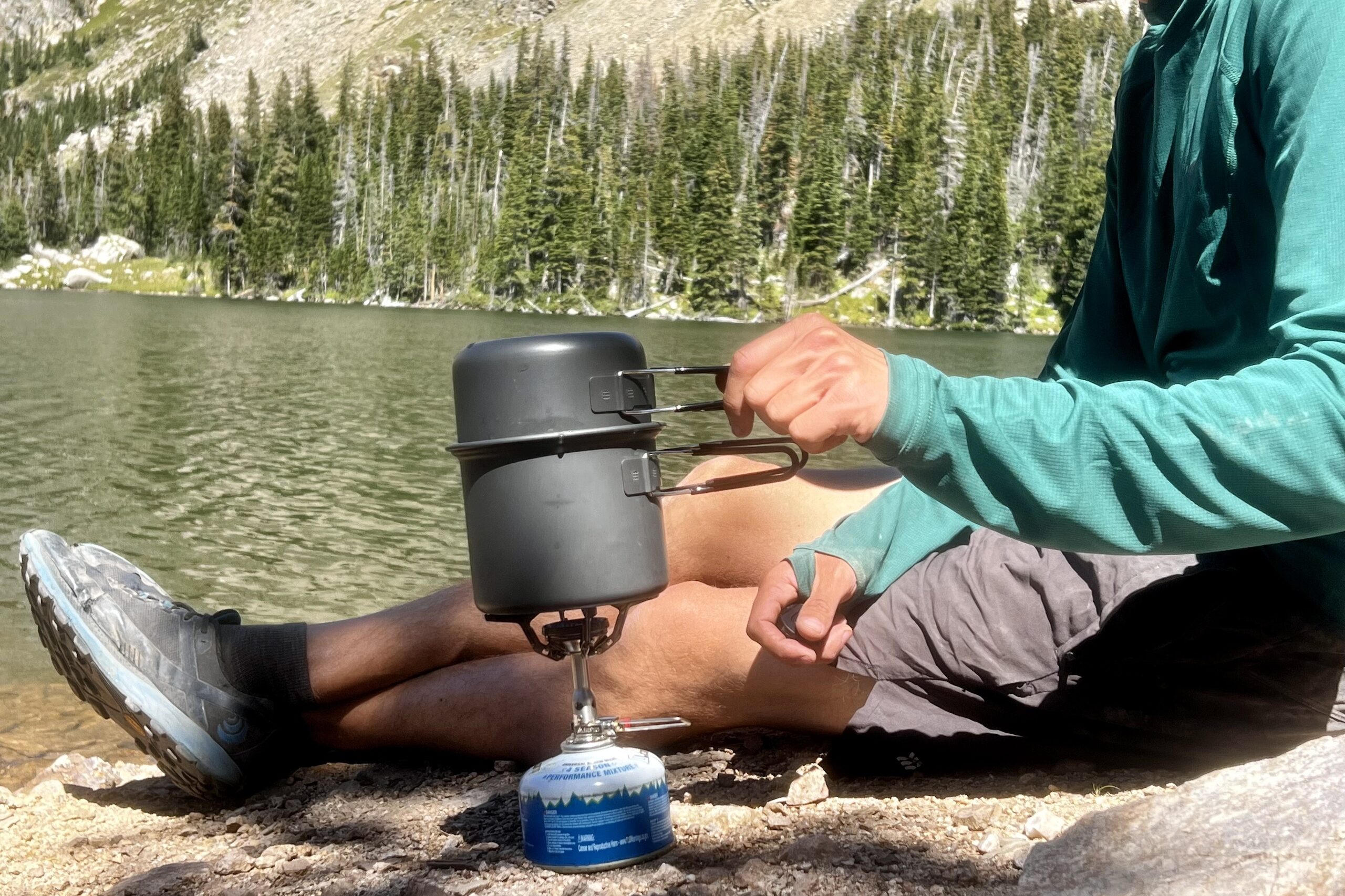
Weight & Packability
The Amicus stove ranks high on our list in terms of its weight and packability. At only 2.8 ounces without its storage bag (3.2 ounces with), it holds its own against the most ultralight stoves in its category. The arms and valve control fold down neatly along the sides, making it no problem to pack it in a smaller pot along with fuel and a lighter. A detail worth noting is that the moving parts are riveted and notched as opposed to screwed in place, reducing the likelihood of things coming loose.
For such a small stove, the pot(s) included are definitely on the larger side. Typically, when people are after such a small and lightweight stove, they choose a pot to match. The pots included in the Amicus Cookset Combo are 1000ml and 500ml which doubles as a lid. Although a larger pot is sometimes more forgiving for a beginner backpacker, we rarely find the need for a pot bigger than 750ml.
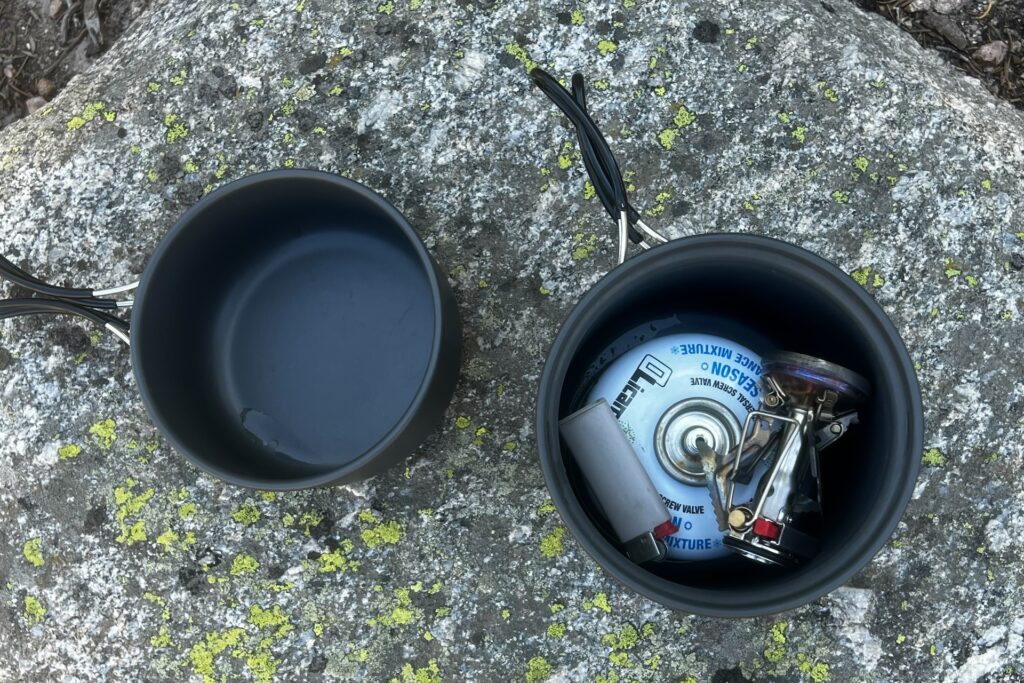
Power & Efficiency
We found in our testing that the power output of the Amicus stove was decent. Not the best, not the worst. However, for the price point, it functions better than you could ask for. We were able to boil one liter of water in about 4 minutes and 20 seconds with no wind present. That’s not terrible for a liter.
When we added wind, however, it took the Amicus thirteen and a half minutes to boil one liter. This is probably due to the larger fuel holes and higher pot height. The stove is not able to push out fuel at a very high pressure, and there is more space between the flame and the pot for wind to blow through. Our best guess is one reason that it’s designed this way is to be able to pack down smaller. Sometimes you have to pick your battles when choosing a backpacking stove.
The Amicus is efficient enough as a one-person stove for shorter to medium-length backpacking trips without excessive cooking. The fuel efficiency of the stove is average or just below average. It’s not the worst, but with such a large included pot, we would like to see a little better performance in this metric.
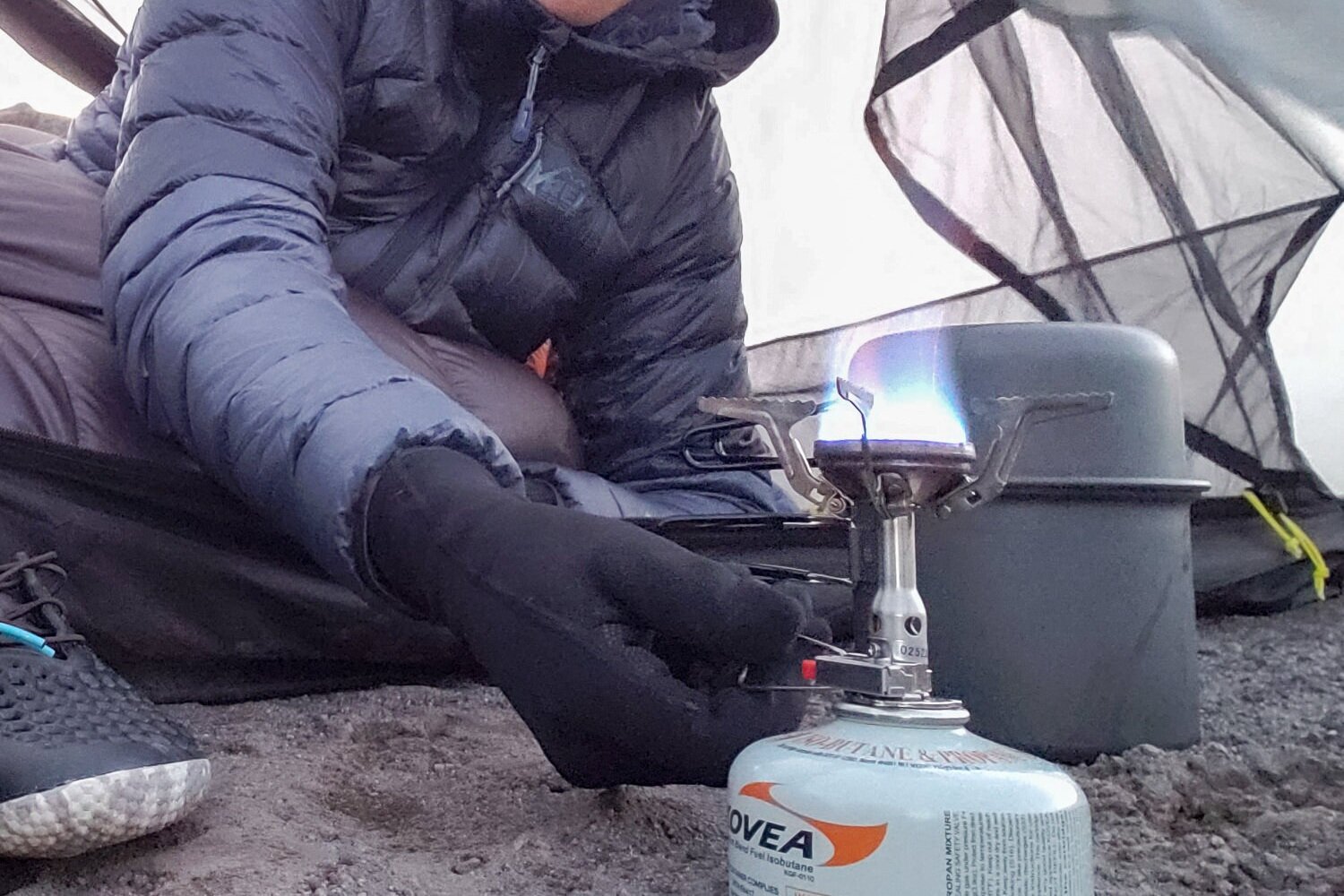
Precision
The Amicus does have some simmer control, but not as much as the best in this category. It probably has enough simmer control to gently reheat a meal, but we wouldn’t count on it to do anything more complex like sautéing. However, for not having a built-in fuel regulator it does pretty good and we think most people would be happy with the amount of simmer control that it does have.
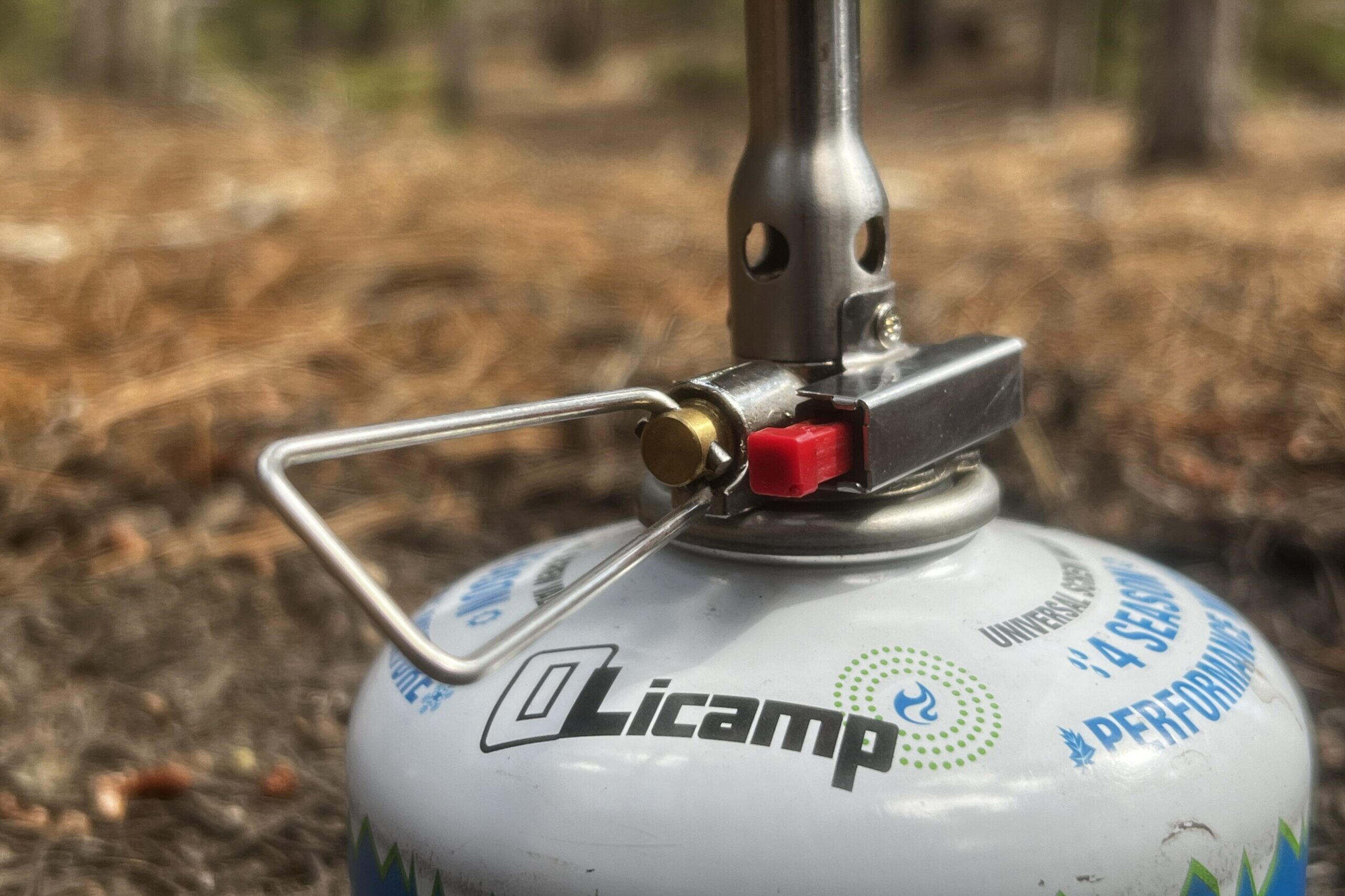
Should You Buy the SOTO Amicus Cookset?
All in all, we are impressed with the Amicus Cookset combo and think it would be a great option for both beginners and experienced backpackers. However, where it really shines is in its performance-to-affordability ratio. You get a huge bang for your buck, it performs well, and it’s easy to use. These factors combined make the combo an absolutely perfect fit for beginners just getting their feet wet in backpacking.
Ultralight backpackers will probably be looking for something a little more basic and with more weight savings. The Amicus stove by itself is a pretty good ultralight option, but the included pots are definitely not. You can purchase the Amicus stove (with or without an igniter switch) without the cookset combo, but it is just as expensive as the whole combo, so you might as well take the free pot.
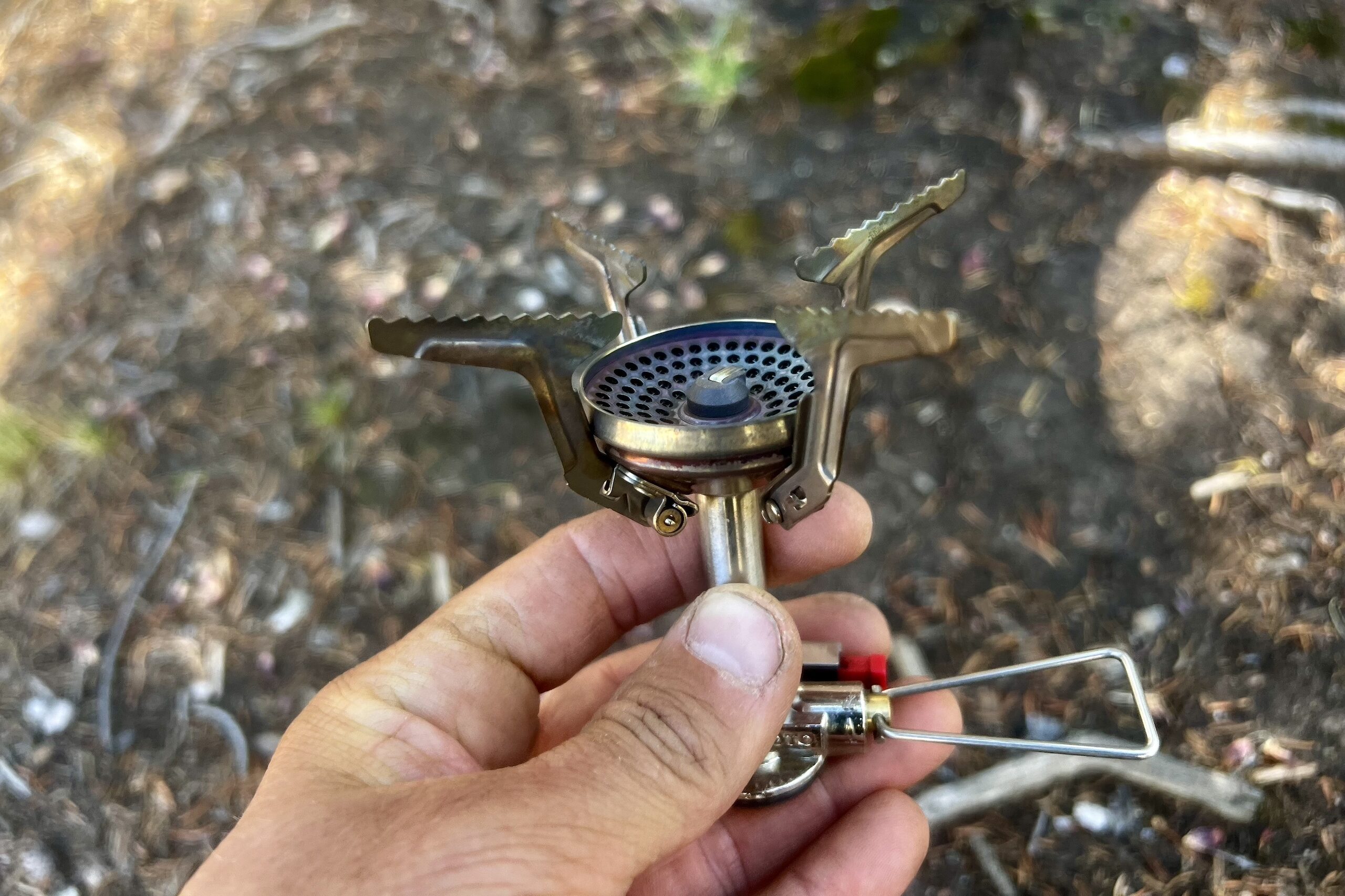
What Other Backpacking Stoves Should You Consider?
MSR PocketRocket 2 Review: The MSR PocketRocket 2 is comparable to the Amicus in weight and packability, but it performs a bit better. It doesn’t include a pot, but if you don’t mind spending the extra dollars on one, it’s worth the consideration.
SOTO WindMaster Review: The SOTO WindMaster is the big brother to the Amicus. It’s a tiny bit heavier and bulkier, but it boils water quicker, is more efficient, and is significantly more windproof.
BRS 3000T Review: If affordability, weight, and size are your main concerns, the BRS 3000T can’t be beat. It’s less durable and user-friendly than the Amicus and burns a lot of fuel, but it weighs one ounce and can be had dirt cheap.
